

Humata Health is building a prior authorization automation platform designed to integrate directly within clinical EHR workflows. As the first product designer on the team, I was responsible for translating process documentation into a functional product—designing dev-ready screens, interaction patterns, and a tailored UI system for Epic-style environments. I worked closely with the product manager to understand and optimize complex medical workflows, ultimately creating high-fidelity designs and a reusable component system now in active implementation.
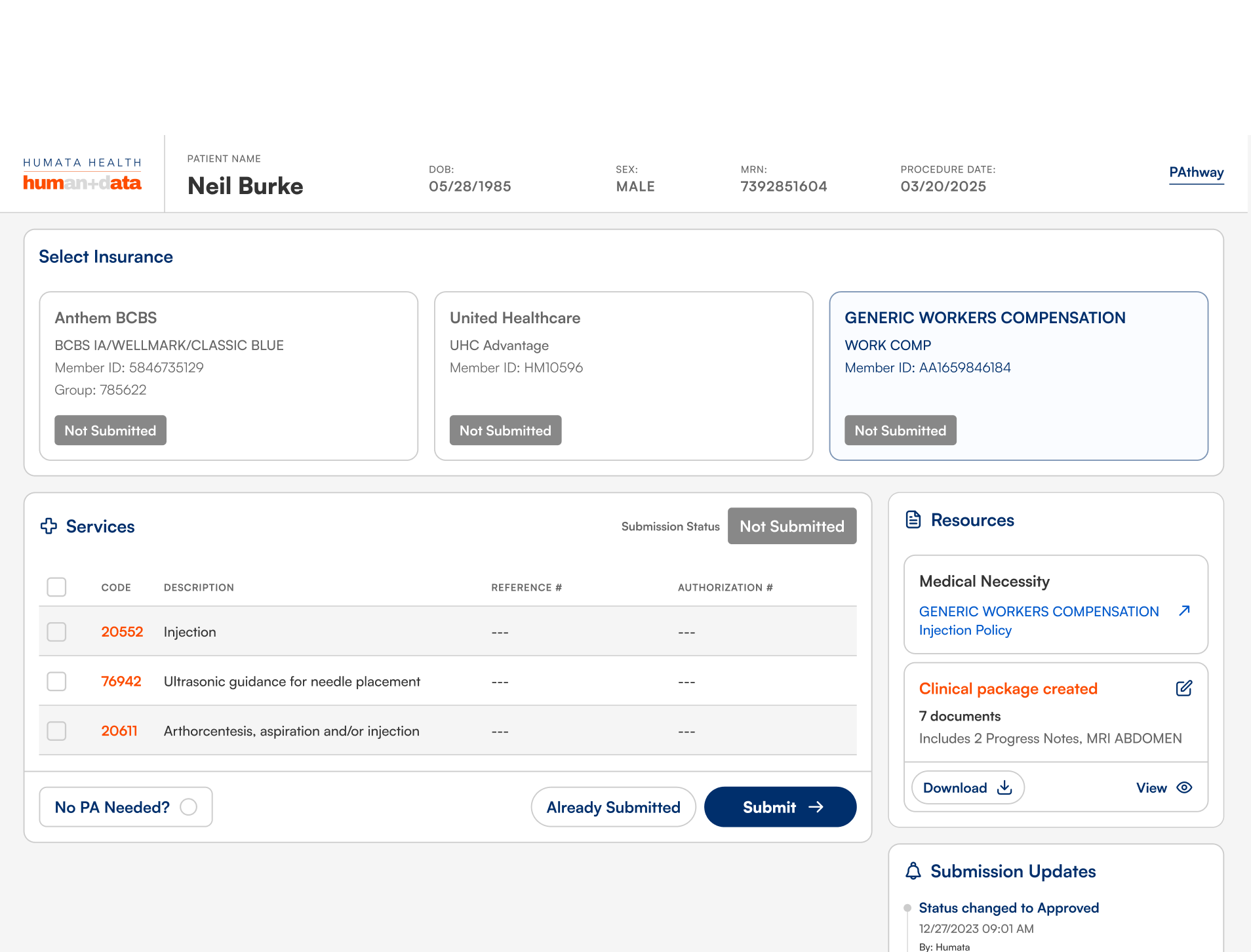
I designed the core user experience for Humata’s prior authorization platform, creating four nuanced flows to support real-world healthcare scenarios. Each flow was built in high fidelity, using a custom component system I developed in Figma with variables and variants for scalable handoff. I also created 23+ mid-fidelity wireframes for stakeholder presentations, mapping the full end-to-end Epic workflow from user login to completed authorization. All designs were created for Vue.js implementation and are now in development.
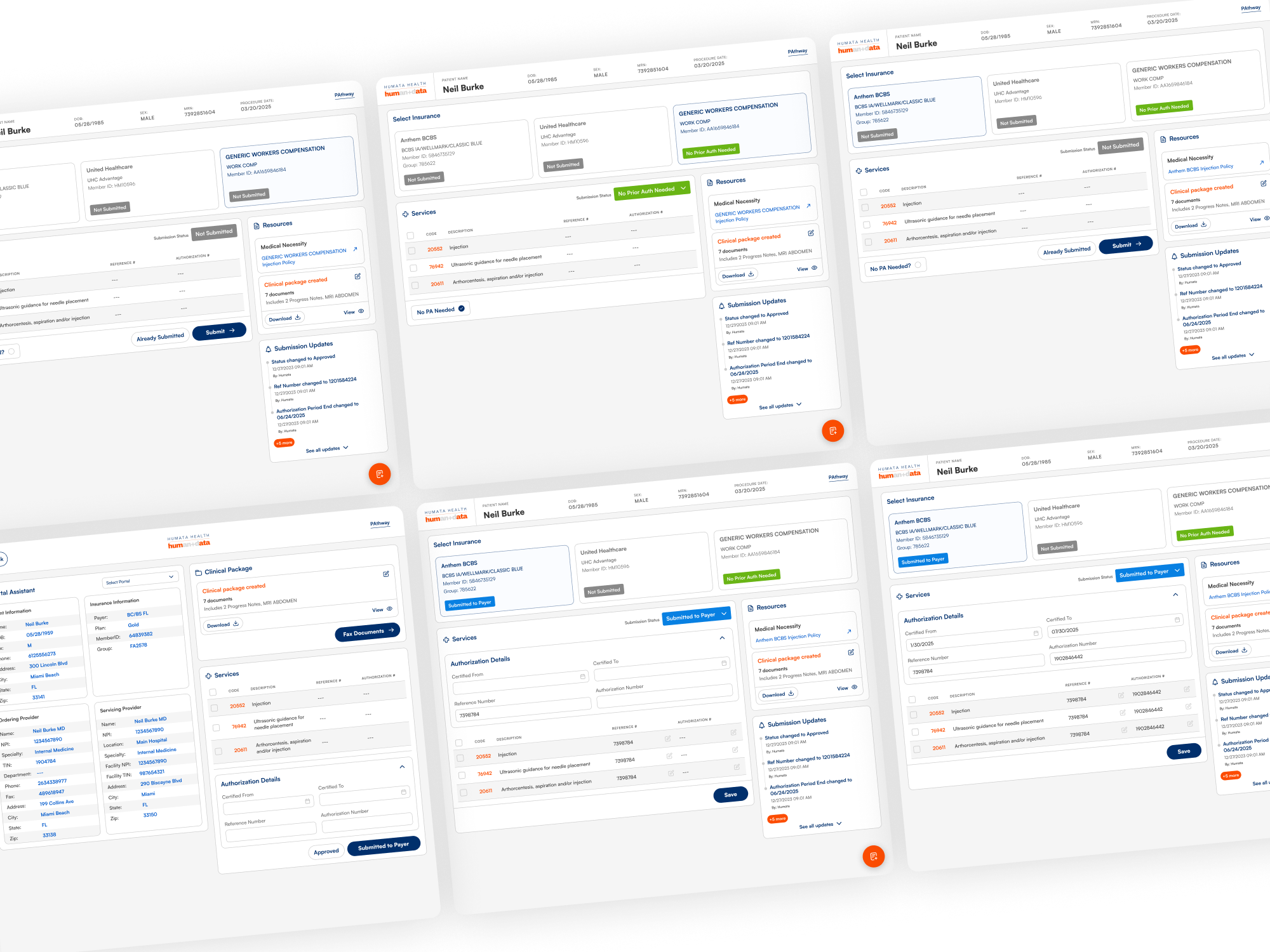
Before designing any screens, I spent time deeply understanding the prior authorization process—both from a clinical and product perspective. The Humata team provided a detailed Lucid chart outlining the proposed user flow, along with basic visual mockups. I worked closely with the product manager to clarify the logic, edge cases, and desired outcomes across different scenarios. As someone new to HealthTech, I conducted additional research to better understand EHR systems and the context in which our product would live. This phase was about converting theoretical flows into a structure I could build from—one that balanced user needs, developer feasibility, and clinical accuracy.

Once I had full clarity on the clinical workflow, I began designing four distinct user flows based on real-world scenarios—each with slight UX variations depending on the outcome of the prior authorization. I focused on creating an experience that could streamline actions without introducing risk or friction. As the interface took shape, I built a reusable Figma component system using variants and variables to maintain visual consistency, reduce redundancy, and support future iterations. I prototyped each flow in high fidelity, ensuring dev-readiness while tailoring interactions to Vue.js constraints. Every design decision prioritized both usability for clinical teams and feasibility for engineering.
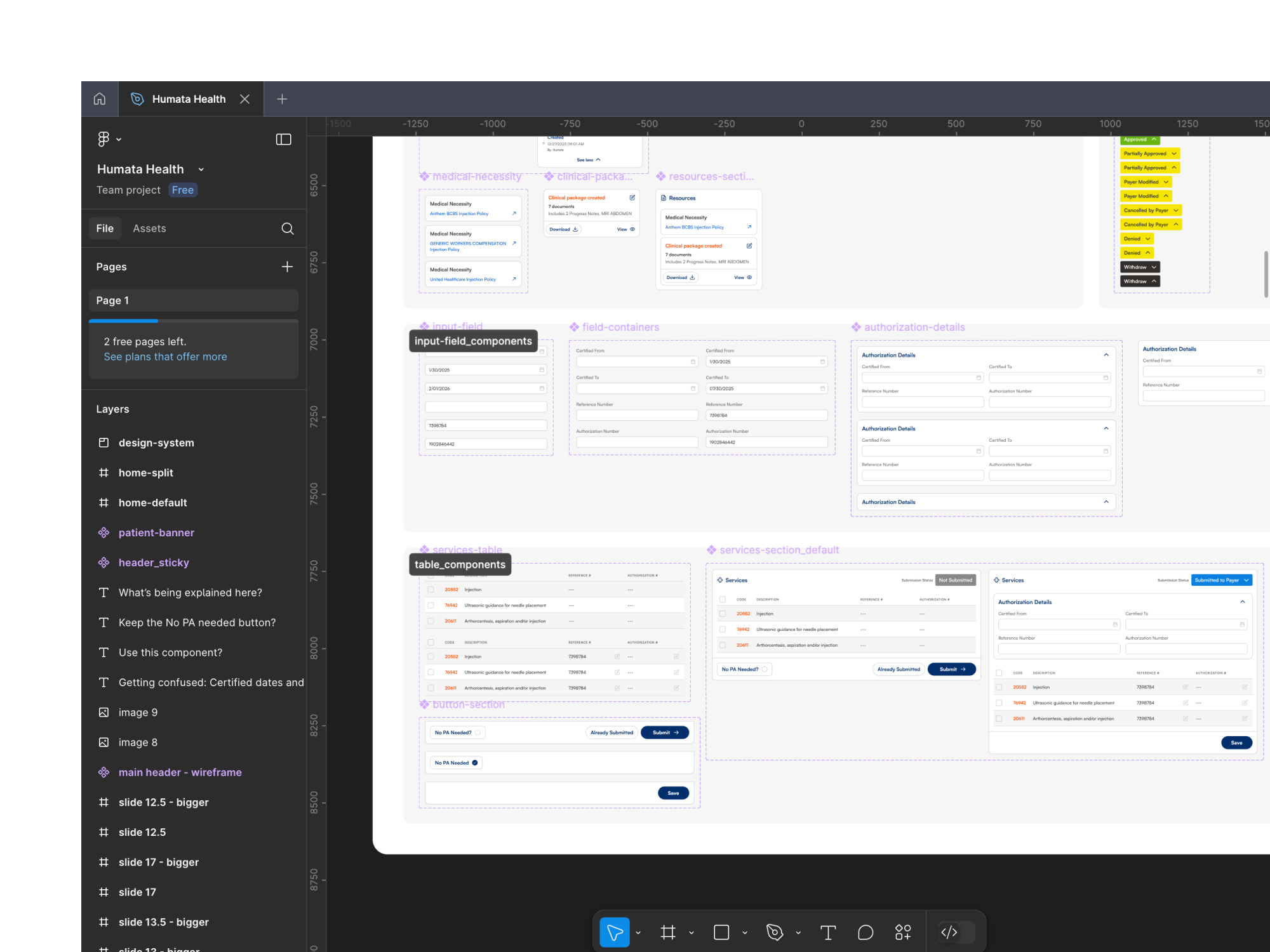
After completing the high-fidelity designs, I created 23+ mid-fidelity wireframes to illustrate the full clinical workflow from login to authorization completion. These frames placed Humata’s UI inside a mock Epic environment—helping stakeholders visualize how the product would function within the broader EHR system. The goal was to tell a clear story: where the product lives, how users interact with it, and how it fits into the daily clinical rhythm. This presentation became part of a stakeholder-facing pitch deck and was later used in investor conversations to communicate product value and context.

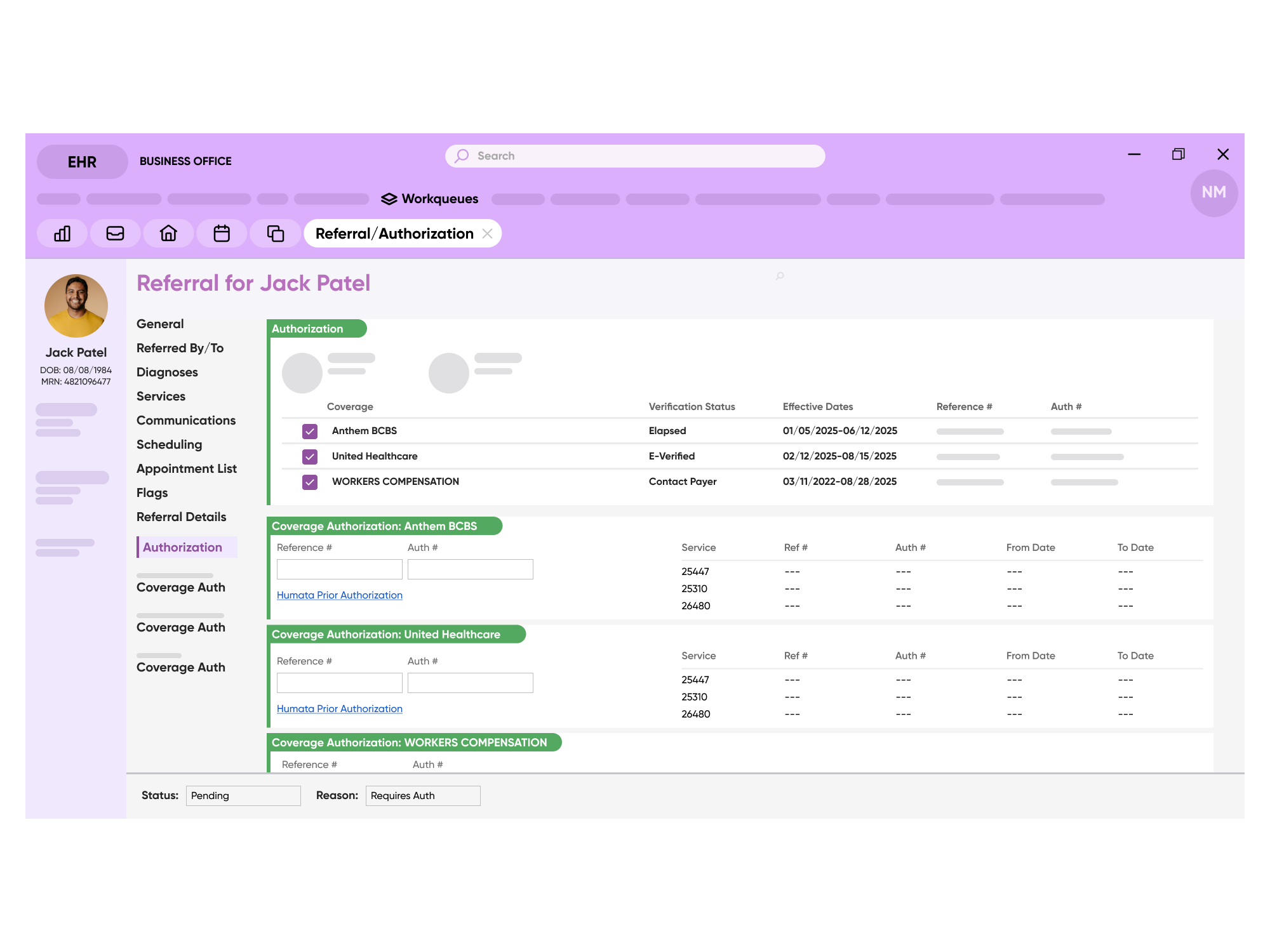
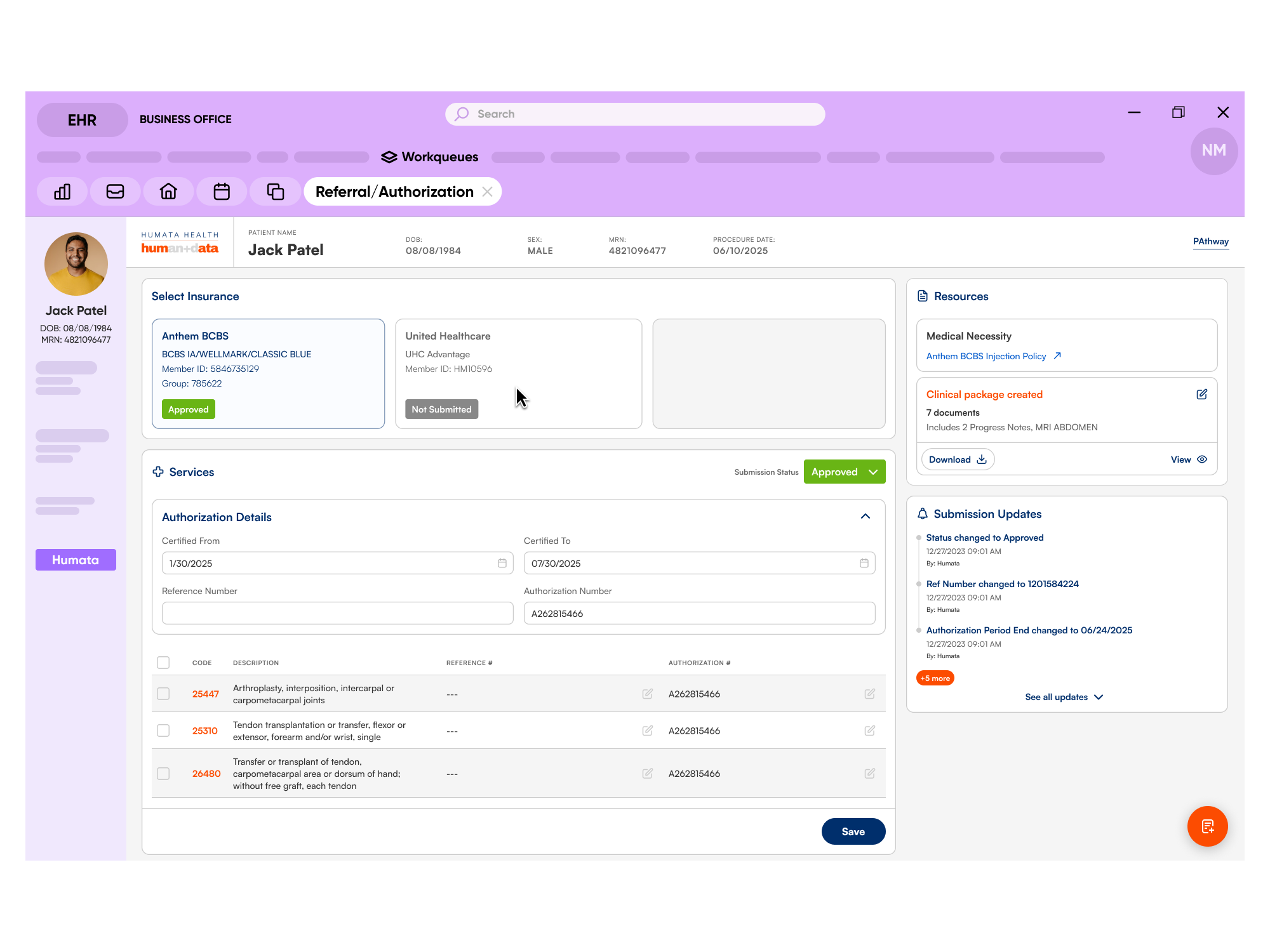
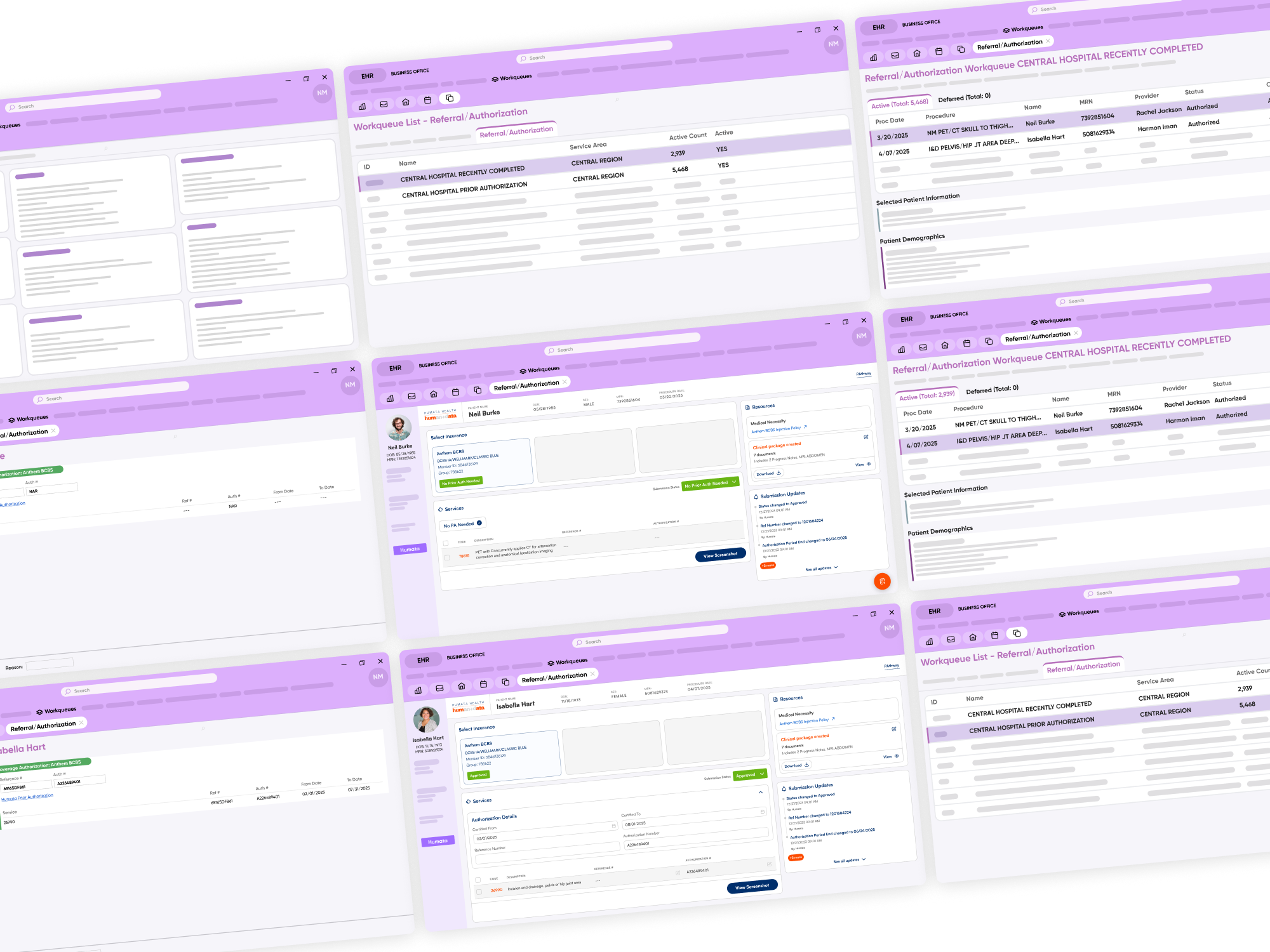
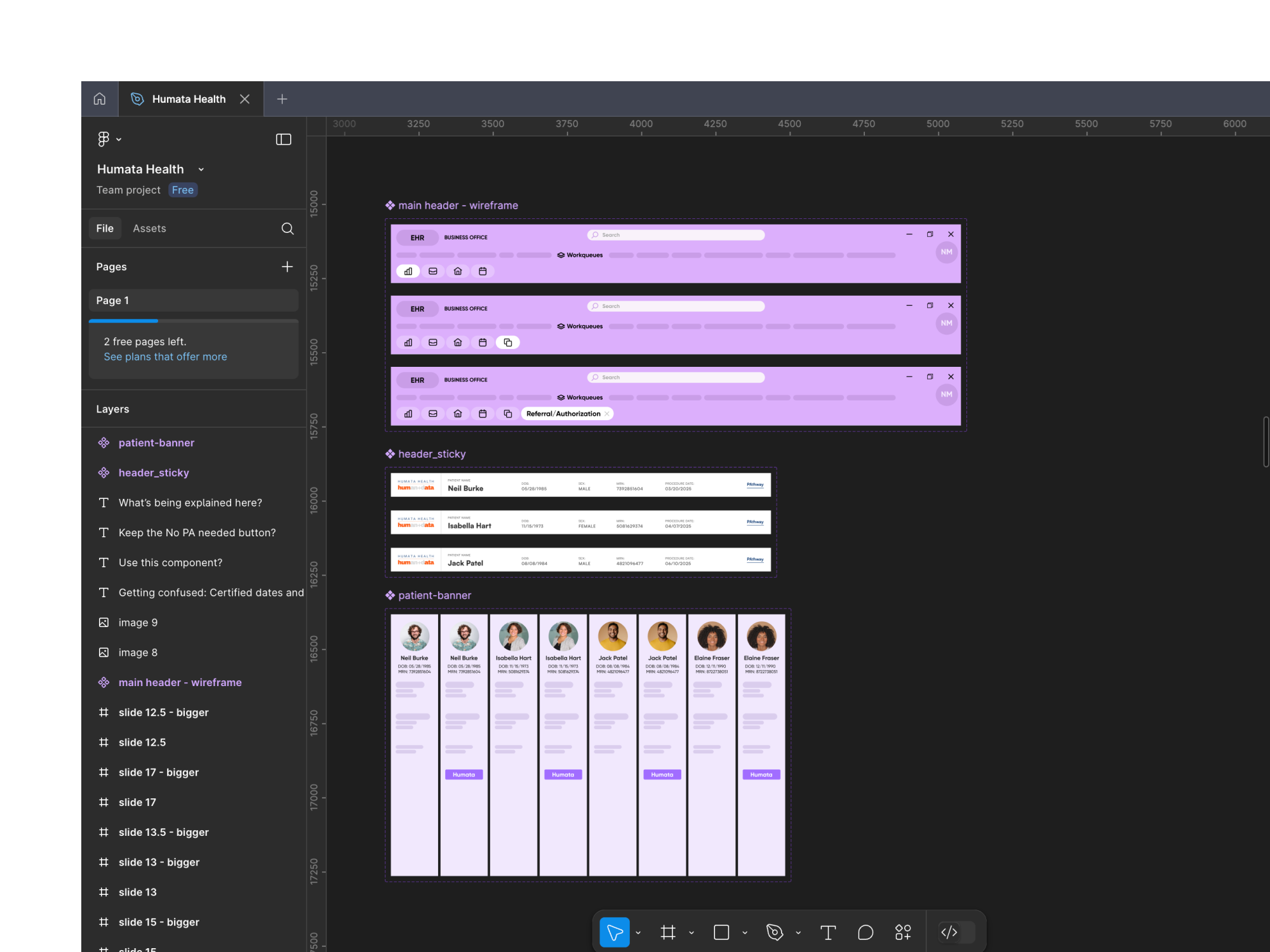
The finalized designs were handed off to engineering and are now in active implementation—early builds closely reflect the flows and patterns I created. The mid-fidelity wireframes I developed were incorporated into stakeholder and investor pitch materials, helping the team communicate product value in a complex clinical space. This project pushed me to quickly learn a domain I had no prior experience in, balance UX intuition with clinical constraints, and design a tool that fits seamlessly into existing systems while subtly improving them.